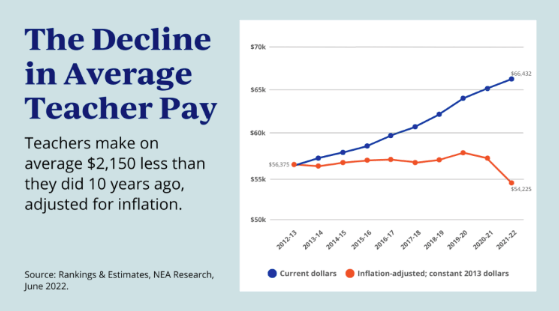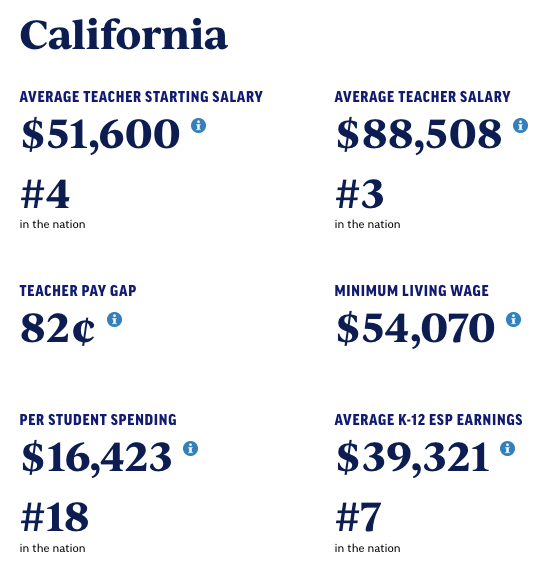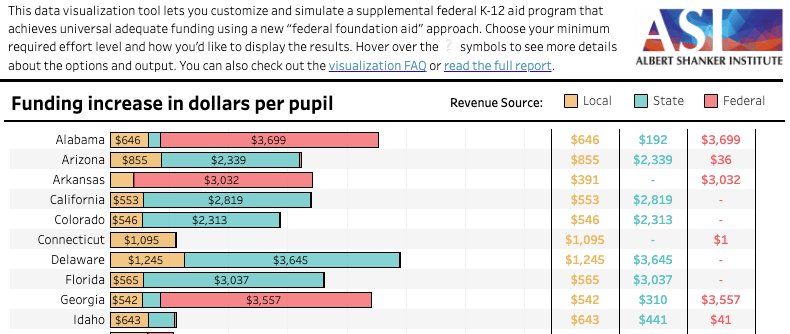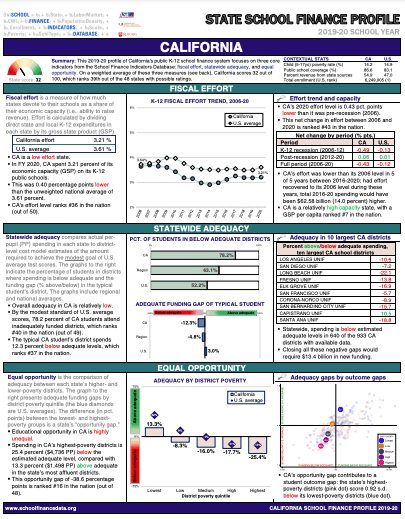It's time to change how we value teachers

It's teacher appreciation week
Until a few years ago, a majority of parents in the US indicated that they would like their children to become public school teachers, according to a long-term poll by PDK. In 2022, the figure was down to 37%.
More than flowers
Thank you notes and presents are wonderful, but we need to do a lot more than celebrate teachers with gestures. We need to commit to changing how we value teachers in America. This means treating teachers as professionals: Educating them well. Paying them well. Respecting their professional judgment.
The sad reality is that few high school students want to be teachers. In a 2023 study, McKinsey reports that teachers in the US are leaving the profession for higher paying and less stressful careers. The pandemic, culture wars, and low compensation have taken their toll.
Teacher compensation
While other professionals have seen their compensation increase over the last decades, teacher wages have not kept pace. As you can see in the chart below, the pay gap between teachers and other college graduates has widened. In 2020, teachers earned about $650 less per week than other college grads. The Economic Policy Institute calls this the Teaching Penalty.
According to the Economic Policy Institute (EPI), “the difference increased by 7.6 percentage points between 2010 and 2021—leaving the average weekly wages of teachers 32.9% behind that of other college graduates by 2021".
After taking account of inflation, NEA reports that today’s teachers are actually worse off than their predecessors a decade ago.

The NEA report shows that in California, the minimum living wage is $54,070. The average teacher’s starting salary is less than a living wage: $51,600.
But what about benefits, some ask? Don’t teachers get better overall compensation because of their health and retirement benefits? Yes, but the benefits haven’t offset the growing wage penalty.
Nationally, EPI reports “The teacher total compensation penalty was 14.2% in 2021 (a 23.5% wage penalty offset by a 9.3% benefits advantage). California’s figures are better, according to NEA, but the average teacher in this state still starts with less than a living wage — and education support personnel (ESP) earn far less than that level:

What would it take to pay teachers well?
Teachers in California are paid, on average, more than teachers in other states. That’s the positive way of framing it. But context counts. The cost of living in California is very different from other states — rent in Los Angeles is a lot higher than rent in Toledo, for example.
Pay isn’t the only thing that matters to a talented person making a career choice. But it does matter. College debt doesn’t just go away on its own, and rent can be gut-wrenching.
Over time, societies get what they pay for. Low average pay for teachers affects the reputation of the profession, which further damages its appeal. This is an issue that threatens the future of the United States as a whole.
Based on international research by the OECD, teachers in countries with a reputation for strong education systems make a lot more money. In Finland and Germany, for example, teachers make about the same as the average college graduate. In the US, by contrast, teachers make a little over half as much as graduates in other lines of work.
It’s a vicious circle, and a national problem.
Funding for public education is an effort problem
America’s public schools have a complex history. The US Constitution makes no mention of education — the tradition of free public education as a universal right emerged gradually and locally. Each state constitution has its own provisions, and local school districts remain powerful and central to this day. Most funding for public education comes from state funds, with the federal government providing a relatively small, routine portion.
States vary in their capacity to invest in public education and in their economic effort to do so. California is a chronically low-effort state when it comes to funding public education. In 2021, spending on public K-12 education accounted for about 3.4% of the economy in the average state. This was a big decline from a decade earlier, when the national average effort was 4.0%. In 2021, education funding effort in California dropped to its lowest level since 1984.
The Shanker Institute has consistently advocated for state education systems to be evaluated in the context of both their context and their capacity.
Districts in high-poverty states (e.g. Mississippi) face enormous challenges to fund high-quality schools, despite committing a high economic effort to do so. California, by contrast, is a higher-wealth state that could afford to spend more on public education, but doesn’t. Low funding of education in this state represents a political choice.
In order to support equitable access to education across the states, the Shanker Institute suggests a federal matching-fund model. The proposal would provide additional federal funding to help states and local school districts reach a national level of adequate funding. To be eligible for this additional money, states would be required to spend a reasonable fair share of their economy on educating children.

Meanwhile
Short of a reinvention of federal funding for education, Linda Darling Hammond, Stanford Professor and President of the California Board of education, has suggested some targeted ideas to increase teacher salaries.
- Give teachers a refundable tax credit of $15,000 to work in high-needs schools and in early education. She says this would increase the “average K–12 teacher’s salary by 25% and the average preschool teacher’s salary by nearly 50%, lifting them out of near-poverty status.” Other teachers could receive tax credits based on how many students from low income homes attend their schools.
- The federal government could offer matching grants for National Board certified teachers to work in high-needs schools. Right now, California offers $5,000 annually.
To our educators
Whether you are on the picket line asking for higher wages, better working conditions, and safer schools, or simply in the middle of negotiations, we hear you and value you.
But remember. School districts can’t print money. They can shift funding in their local budgets to increase educator wages but that means in many cases cuts in other areas of the education budget.
Until the state and federal government commit more total funding to public education in a manner that consistently grows with the economy, the system will continue to fall short of treating you as valued professionals.
Tags on this post
All Tags
A-G requirements Absences Accountability Accreditation Achievement gap Administrators After school Algebra API Arts Assessment At-risk students Attendance Beacon links Bilingual education Bonds Brain Brown Act Budgets Bullying Burbank Business Career Carol Dweck Categorical funds Catholic schools Certification CHAMP Change Character Education Chart Charter schools Civics Class size CMOs Collective bargaining College Common core Community schools Contest Continuous Improvement Cost of education Counselors Creativity Crossword CSBA CTA Dashboard Data Dialogue District boundaries Districts Diversity Drawing DREAM Act Dyslexia EACH Early childhood Economic growth EdPrezi EdSource EdTech Education foundations Effort Election English learners Equity ESSA Ethnic studies Ethnic studies Evaluation rubric Expanded Learning Facilities Fake News Federal Federal policy Funding Gifted Graduation rates Grit Health Help Wanted History Home schools Homeless students Homework Hours of opportunity Humanities Independence Day Indignation Infrastructure Initiatives International Jargon Khan Academy Kindergarten LCAP LCFF Leaderboard Leadership Learning Litigation Lobbyists Local control Local funding Local governance Lottery Magnet schools Map Math Media Mental Health Mindfulness Mindset Myth Myths NAEP National comparisons NCLB Nutrition Pandemic Parcel taxes Parent Engagement Parent Leader Guide Parents peanut butter Pedagogy Pensions personalized Philanthropy PISA Planning Policy Politics population Poverty Preschool Prezi Private schools Prize Project-based learning Prop 13 Prop 98 Property taxes PTA Purpose of education puzzle Quality Race Rating Schools Reading Recruiting teachers Reform Religious education Religious schools Research Retaining teachers Rigor School board School choice School Climate School Closures Science Serrano vs Priest Sex Ed Site Map Sleep Social-emotional learning Song Special ed Spending SPSA Standards Strike STRS Student motivation Student voice Success Suicide Summer Superintendent Suspensions Talent Teacher pay Teacher shortage Teachers Technology Technology in education Template Test scores Tests Time in school Time on task Trump Undocumented Unions Universal education Vaccination Values Vaping Video Volunteering Volunteers Vote Vouchers Winners Year in ReviewSharing is caring!
Password Reset
Search all lesson and blog content here.
Login with Email
We will send your Login Link to your email
address. Click on the link and you will be
logged into Ed100. No more passwords to
remember!















Questions & Comments
To comment or reply, please sign in .
enangriffin May 12, 2023 at 2:08 pm